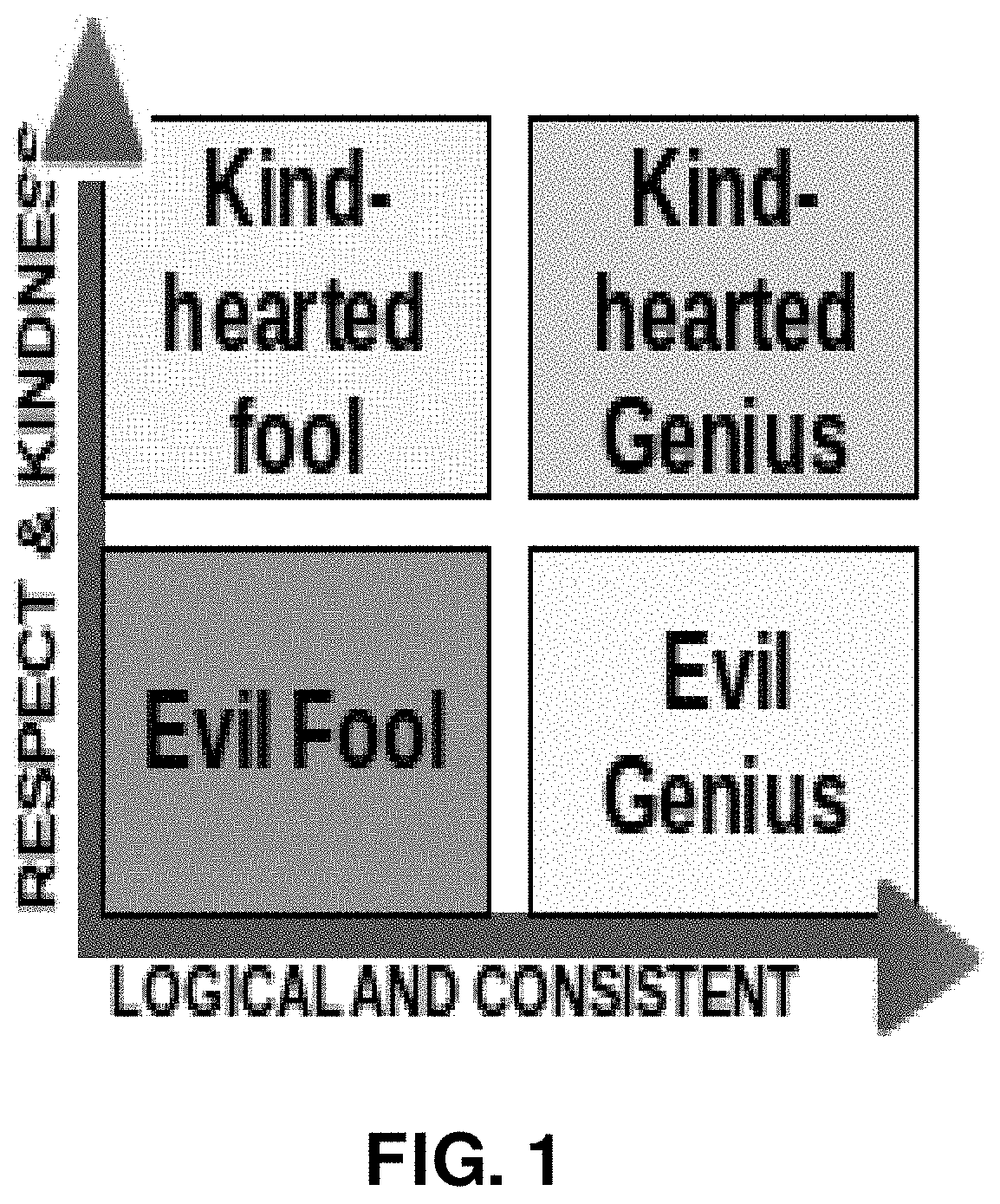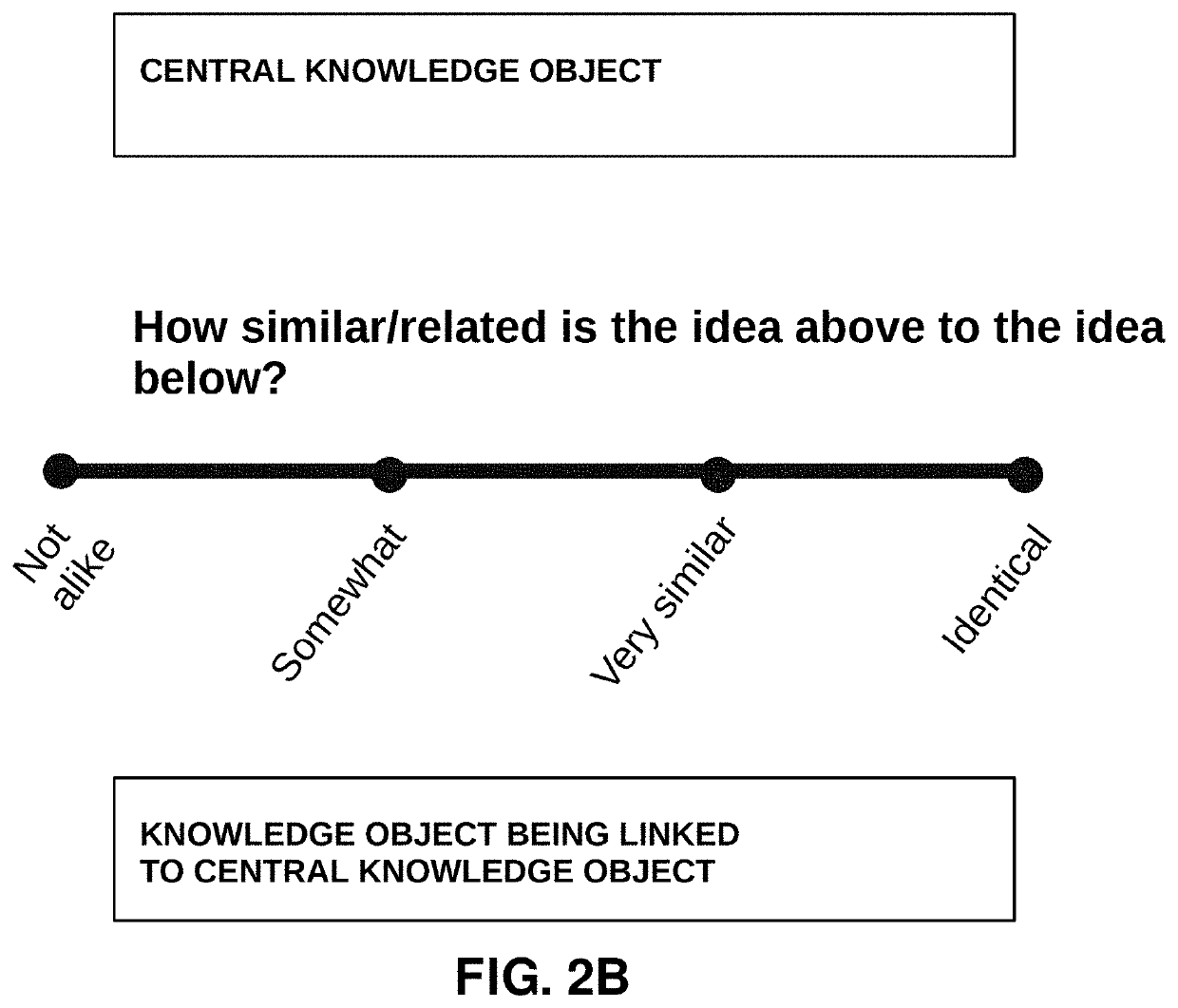Computer-aided methods and systems for distributed cognition of digital content comprised of knowledge objects
a technology of knowledge objects and computer-aided methods, applied in the field of computer-aided methods and systems, can solve problems such as polarizing views, social media platforms aligned with conservative values similarly experience inherent bias issues, and achieve the effect of enhancing a positive state and reducing a negative sta
- Summary
- Abstract
- Description
- Claims
- Application Information
AI Technical Summary
Benefits of technology
Problems solved by technology
Method used
Image
Examples
example 1
[0143]In a first example as shown in FIGS. 14A-14E, a programmed computer is configured to receive submissions from a plurality of community members with regard to a knowledge object. As will be seen, each community member has a reputation value that is attributed to the community member. Furthermore, each community member's submission regarding the knowledge object includes an evaluation value representing an evaluation of the knowledge object by the community member.
[0144]The community members are asked to evaluate the meaning of the knowledge object on a one-dimensional scale. In this example, the knowledge object is an “idea” knowledge object. For illustration purposes, this one-dimensional scale is intended to elicit a measure of “truth” of the knowledge object, though in other implementations, other characteristics or qualities of a knowledge object may be evaluated. In this example, the programmed computer is operating a platform that determines a consensus evaluation of the ...
example 2
[0170]FIG. 15 provides an overview (in a spreadsheet format) of another implementation of a platform that, similar to implementation shown in FIGS. 14A-14E, iteratively determines updated consensus evaluations and reputation values while receiving submissions from community members. The example shown in FIG. 15 builds on Example 1. Instead of a using one-dimensional scale to evaluate a knowledge object as in Example 1, with Example 2, community member evaluations relate to a 2×2 matrix with two coordinates: x and y. One non-limiting example of a 2×2 matrix that can be used for community member evaluations of a knowledge object is shown and described above in relation to FIG. 1. As previously described, this 2×2 matrix in FIG. 1 may be used to evaluate an “idea” knowledge object, in which an evaluation value on the x-axis represents the degree to which a community member considers the content of the knowledge object to be “logical and consistent” and an evaluation value on the y-axis...
example 3
[0179]FIG. 16 provides an overview (in a spreadsheet format) of yet another implementation of a platform that, similar to the implementations shown in Examples 1 and 2, iteratively determines updated consensus evaluations and reputation values while receiving submissions from community members. The example shown in FIG. 16 builds on Examples 1 and 2. Instead of evaluating a knowledge object using only a single one-dimensional scale (as in Example 1) or a single 2×2 matrix (as in Example 2), this example (Example 3) shows an implementation of a platform in which community members use both a one-dimensional scale and a 2×2 matrix to evaluate a knowledge object. The platform in Example 3 may use algorithms and formulas similar to those used in Examples 1 and 2, but adjusted to account for the additional evaluation values received from each community member according to the one-dimensional scale and the 2×2 matrix employed. Furthermore, these algorithms and formulas may implement logic ...
PUM
 Login to View More
Login to View More Abstract
Description
Claims
Application Information
 Login to View More
Login to View More - R&D
- Intellectual Property
- Life Sciences
- Materials
- Tech Scout
- Unparalleled Data Quality
- Higher Quality Content
- 60% Fewer Hallucinations
Browse by: Latest US Patents, China's latest patents, Technical Efficacy Thesaurus, Application Domain, Technology Topic, Popular Technical Reports.
© 2025 PatSnap. All rights reserved.Legal|Privacy policy|Modern Slavery Act Transparency Statement|Sitemap|About US| Contact US: help@patsnap.com



